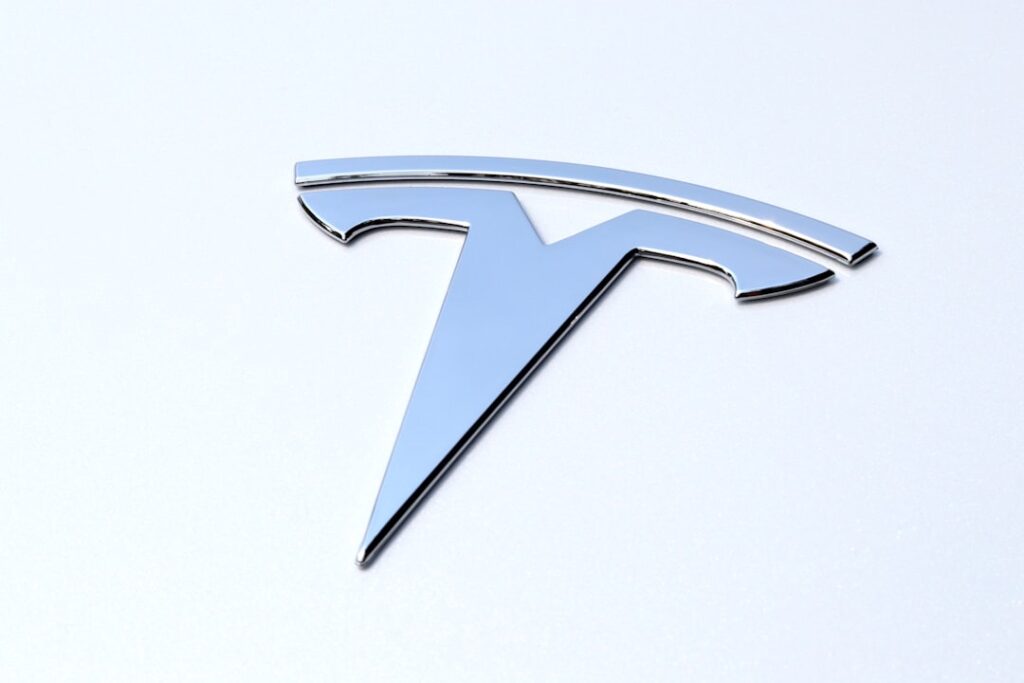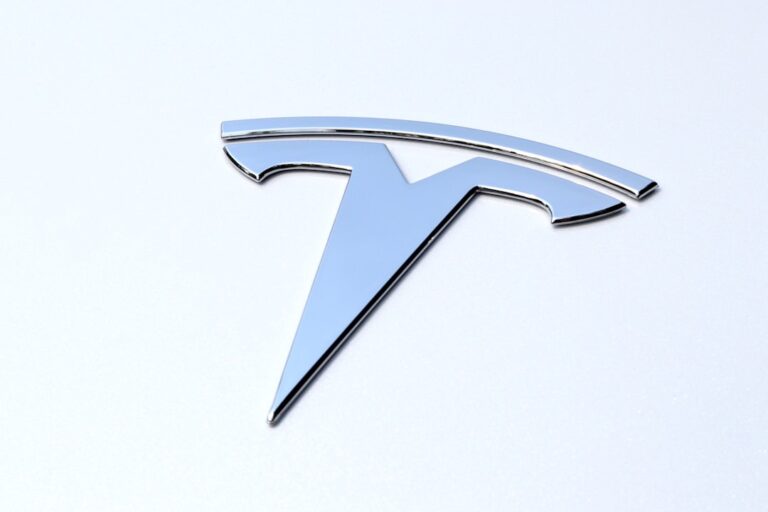
AUSTIN, Texas — March 3, 2025 — Tesla stock rebounded Monday as Morgan Stanley named it top auto pick, citing AI and robotics growth potential despite recent 28% February decline. Analyst Adam Jonas sees 50% upside potential with $430 price target as Tesla transitions beyond automotive.
Current Market Performance and Recent Price Action
Tesla stock (TSLA) showed signs of recovery today, with shares climbing approximately 3% following a devastating February that saw the electric vehicle maker suffer its second-worst monthly performance in company history. The stock tumbled nearly 28% in February, a troubling development for investors who had witnessed an impressive rally at the end of 2024. This dramatic downturn came amid increasing concerns about Tesla’s vehicle deliveries and growing speculation regarding CEO Elon Musk’s political activities potentially alienating customers in key markets. Despite these challenges, Tesla shares were trading around $299 during today’s session, representing an increase of about 2% from the previous close.
The recent price action follows a period of extraordinary volatility for Tesla stock, which has become characteristic of the company’s trading pattern. After reaching a closing peak of $479.86 in December 2024 during a post-election surge, the stock subsequently experienced a nearly 40% devaluation, effectively erasing almost all gains achieved following the presidential election. This pattern of extreme price movements underscores the speculative nature of Tesla as an investment vehicle and reflects the widely divergent views among Wall Street analysts, whose price targets range dramatically from as low as $135 to as high as $379.13.
Despite the recent tumble, Tesla stock has performed remarkably well over a longer timeframe, with shares having increased by nearly 50% over the past year according to Investopedia data. This longer-term perspective offers some consolation to Tesla investors who may be concerned about the recent downturn, suggesting that while short-term volatility remains high, the overall trajectory has been positive for those with a longer investment horizon.
Technical Analysis: Key Support and Resistance Levels
Technical analysts observing Tesla’s recent price action have identified several critical price levels that may influence the stock’s direction in the coming days and weeks. According to detailed analysis from Wicked Stocks, Tesla recently triggered a sell signal when it settled below the 340.80 Fibonacci level in combination with breaking below the 345.83 two-year channel top. This technical breakdown suggested further downside potential, with an immediate target of 253.88 coming into focus.
The 277.50 level represents a significant channel bottom that has been roughly containing selling pressures in recent sessions. As of today, as long as Tesla maintains support above this level, technical analysts suggest the potential for an upward retracement over the next couple of weeks, possibly back into the low to mid-340s range. A close above the 301.13 intraday resistance level would provide further confirmation of this upward scenario, potentially signaling a move toward the low to mid-340s by the end of next week.
Looking further ahead, technical analysts have outlined a critical resistance zone between 340.80 and 367.85, which is narrowing on a daily basis to eventually converge at a single point over the coming weeks. This zone is expected to absorb buying pressure through March, with the possibility that prices could subsequently fall back to the 253.88 target within two to three weeks. This dynamic suggests that even if Tesla stock experiences a relief rally in the near term, it may face significant resistance that could contain upward momentum through much of March.
Morgan Stanley’s Bullish Outlook on Tesla
Despite Tesla’s recent market challenges, Morgan Stanley has taken a decidedly bullish stance on the stock. Today, the investment bank named Tesla its “Top Pick” in the U.S. automobile sector, with analyst Adam Jonas expressing confidence in the company’s expansion into artificial intelligence and robotics. This positive assessment comes at a crucial time for Tesla investors, who have been grappling with the stock’s significant underperformance in the early months of 2025.
Jonas maintained an “overweight” rating on Tesla shares with a price target of $430, suggesting a potential upside of more than 50% from current levels. In a more optimistic “bull case” scenario, Jonas suggested that Tesla shares could potentially reach $800, highlighting the wide range of possible outcomes for the stock. The analyst’s confidence stems from his view that Tesla is undergoing a strategic transition “from an automotive ‘pure play’ to a highly diversified play on AI and robotics.”
Particularly noteworthy is Jonas’s perspective on Tesla’s recent delivery challenges. Rather than viewing the below-expectation deliveries as a fundamental problem, he characterized them as “emblematic of a company in the transition from an automotive ‘pure play’ to a highly diversified play on AI and robotics.” This perspective represents a fundamental shift in how Tesla is being evaluated by at least some Wall Street analysts, who are increasingly viewing the company through the lens of its technology potential rather than solely as an automotive manufacturer.
Tesla’s Strategic Transition Beyond Automotive
The core of Morgan Stanley’s bullish thesis centers on Tesla’s ongoing transformation from a traditional automaker to a technology company focused on artificial intelligence and robotics. According to Jonas, as AI moves from the digital world to the physical world, Tesla’s Technology Acceptance Model (TAM), which is used in self-driving cars and other applications, will “further expand to broader domains.” This expansion represents a substantial growth opportunity that extends well beyond Tesla’s current automotive business.
This strategic pivot aligns with comments made by Tesla CEO Elon Musk, who reportedly tweeted this past weekend that Tesla’s earnings could potentially grow tenfold over the coming five years if the company’s business execution is “outstanding.” While such a prediction might seem extraordinary, it reflects Musk’s vision of Tesla evolving into much more than an electric vehicle manufacturer.
The transition toward AI and robotics comes at a time when Tesla’s automotive sales have shown signs of pressure. In February, Tesla shares declined nearly 28% due to a significant drop in electric vehicle sales. However, Morgan Stanley’s analysis suggests that this slowdown in traditional automotive sales might actually represent an opportunity for investors to gain exposure to Tesla’s developing technology businesses at a relatively attractive valuation.
Challenges and Concerns for Tesla
Despite the optimistic outlook from Morgan Stanley, Tesla continues to face significant challenges that could impact its stock performance in the coming months. Most immediately, the company has experienced a concerning decline in vehicle deliveries, with Jonas anticipating that Tesla’s total deliveries for 2025 might decrease compared to the previous year. While he frames this as potentially creating an “attractive entry point” for investors, it nonetheless represents a fundamental challenge to Tesla’s core business in the near term.
Another significant concern revolves around CEO Elon Musk’s political activities and their potential impact on consumer sentiment. Recent reports have suggested that Musk’s political involvement might be alienating potential customers, contributing to the decline in electric vehicle sales. This dynamic introduces a unique risk factor for Tesla investors, as the personal activities of its high-profile CEO could potentially have material impacts on the company’s commercial success.
Competition in the electric vehicle market continues to intensify, with traditional automakers and new entrants alike developing increasingly compelling alternatives to Tesla’s offerings. This competitive pressure may continue to weigh on Tesla’s automotive margins and market share, even as the company attempts to pivot toward new technology domains. Additionally, the success of Tesla’s AI and robotics initiatives remains speculative at this stage, with substantial execution risk associated with these ambitious expansions.
Investment Implications and Future Outlook
For investors considering a position in Tesla stock, the current market environment presents both significant risks and potential opportunities. The stock’s recent volatility underscores the speculative nature of Tesla as an investment, with wide-ranging analyst opinions reflecting genuine uncertainty about the company’s near-term prospects. However, Morgan Stanley’s bullish outlook suggests that for investors who believe in Tesla’s ability to successfully transition into AI and robotics, the recent price decline may represent an attractive entry point.
Technical analysis indicates that Tesla stock could experience continued volatility in the coming weeks, with potential for a short-term rebound toward the low to mid-340s range, followed by possible resistance that could contain further gains through March. Investors with a shorter time horizon should be particularly attentive to these technical levels, as they may provide guidance on potential entry and exit points amid the stock’s volatile price action.
For longer-term investors, the fundamental question remains whether Tesla can successfully execute its strategic transition from an automotive manufacturer to a technology company focused on AI and robotics. If Tesla can demonstrate meaningful progress in these areas while stabilizing its core automotive business, the stock could potentially justify Morgan Stanley’s bullish price target of $430, representing substantial upside from current levels.
Conclusion: Navigating Tesla’s Evolving Investment Thesis
As Tesla continues its evolution from an automotive manufacturer to a technology company with ambitious goals in AI and robotics, investors face the challenge of evaluating the stock based on an increasingly complex set of factors. The recent price decline has reset market expectations to some degree, potentially creating a more balanced risk-reward profile for new investors considering a position in the stock.
Morgan Stanley’s designation of Tesla as its “Top Pick” in the U.S. automotive sector provides a significant vote of confidence at a time when market sentiment has been decidedly negative. Analyst Adam Jonas’s perspective that Tesla’s declining automotive sales actually reflect its strategic transition rather than fundamental weakness offers an alternative narrative that more optimistic investors may find compelling. However, significant execution risks remain, and the success of Tesla’s expansion into AI and robotics is far from guaranteed.
For investors considering Tesla stock in the current environment, maintaining awareness of both technical and fundamental factors will be crucial. The stock’s notorious volatility is likely to continue, creating both risks and opportunities depending on one’s investment time horizon and risk tolerance. While Morgan Stanley’s bullish perspective offers a compelling long-term vision for Tesla, investors should carefully weigh this against the numerous challenges the company faces as it attempts to execute on its ambitious transformation.
